By Tracy G. Cassels
Birth Experience I have covered this in depth elsewhere (see here) but as a reminder, a “negative” birth experience (defined in terms of the mother’s belief about it) and separation from a newborn infant are major predictors of PPD[6][7][8][9]. Add to that that caesarean sections, which now make up a third of births in the United States and Canada, is an independent factor in predicting negative birth experiences and negative psychosocial outcomes after birth[10]. In short, despite people saying that a birth is a birth is a birth, not all births are equal. Breastfeeding The correlational relationship between breastfeeding and PPD is well-established with many studies finding both that problems with breastfeeding predict PPD[11] and that PPD affects breastfeeding duration and type (exclusive versus mixed versus none)[12][13]. The bidirectionality of the research is not too surprising. For those who struggle with breastfeeding at the start, the struggle itself to do something many women feel should come naturally can trigger depressive symptoms, but also the lack of hormonal influence that breastfeeding has. Given that breastfeeding leads to greater ease of bonding with one’s infant[14] via the release of oxytocin[15], the lack of this effect can cause problems. But even once breastfeeding has been established, if PPD comes on after this, then breastfeeding seems to be negatively affected, despite its ability to produce hormones that help counter PPD. This is why breastfeeding support is essential. Support for moms who are struggling – because to struggle at first is normal – and then further support for moms who experience PPD. The cessation of breastfeeding should not be something that mother’s feel they have to do because of depression or are pushed into doing. Post-Partum Rituals In many cultures (and in many more historically), there’s a post-partum period in which mom and baby are truly catered to and allowed to bond. This period – typically lasted around six weeks – provides the mother time to rest from birth, master the art of breastfeeding, all the while having others around to help with duties that would normally fall on her shoulders. In a great review of the anthropological literature, it was found that having this post-partum period for a mother was associated with virtually no PPD[16]. In her book on Attachment Parenting, Mayim Bialik recommended a modified three-week post-partum ritual in which the mother and infant don’t leave the bed for 1 week, don’t leave the bedroom for another week, and then don’t leave the house for the final week[17]. This period should allow mom enough time to rest while not concerning herself with the myriad other things that go on in the home while slowly adjusting to life with her new child. Support Central to being able to do a post-partum ritual, breastfeeding, birth, etc. is support. Both emotional and practical. While emotional support can often be obtained over the phone or from friends, it’s the practical support that many families miss and which put undo strain on new parents and lead to higher rates of PPD[18]. I wrote a piece on the importance of partner support (see here), but even outside of the family unit, instrumental help is key to a family’s well-being. And for single parents, the availability of instrumental support is linked to better maternal psychosocial functioning and better outcomes for kids[19]. In developing countries, the lack of support has been found to be one of the largest predictors of PPD[4][5]. Interestingly, a cost-effectiveness study out of Ontario, Canada found that while a peer support prevention program for PPD cost more than the usual avenues (which have not been as successful), the savings compared to the costs of PPD itself were quite large ($4497 per woman for the peer support group versus $20,196 per case of PPD)[20]. Work Away From Home Traditionally, women’s work was such that they were able to do it with baby close. In fact, many hunter-gatherer tribes today still have infants close to or attached to their mothers for close to 100% of the day[21]. Mothers work with their children. However, our current work structure in which the parent must leave the house and separate from their child, sometimes very early (e.g., USA), has repercussions for everyone, but notably for post-partum depression. Research in the United States found that if economic hardship was not low (i.e., the families were not well-off), returning to work after the traditional six-week leave resulted in lower mental and physical health for women[22]. In fact, the authors of this piece argue that there needs to be a reconsideration of the current six week leave for women, proposing extended benefits and flexible work schedules upon return. In cases where women must return to work, we must work to ensure that they can keep their infants close. On-site daycares, flexible work schedule, working from home – all of these are ways to allow a mother to work and earn much-needed income while staying close to her infant. Companies may want to consider this given that the cost associated with postpartum depression health for employers was 90% higher than for non-depressed women[23]. Sleep This is one of the areas that is consistently highlighted in the research as support for sleep training infants. As I’ve already covered elsewhere, I do not think that this is the way to go (see here). But to the fact that sleep does influence PPD, severe sleep deprivation seems to be due to our more modern sleep habits. We place infants in rooms away from us (contrary to every traditional, tribal culture[24]) which has the net effect that not only must we fully wake to feed our infants, but we also have to remain awake while they feed and only when they are done and resettled, can we return to sleep. Compare this with co-sleeping in which the infant is either in bed with the mother or close by (and the mother typically feeds in bed), and mom does not truly have to wake or move much to feed her infant. The second factor is formula. If one is not breastfeeding, infant arousals will be less frequent, but when they do rouse, it’s not a simple matter of putting the infant to the breast, but actually having to prepare a bottle, including heating it up and sterilizing. This type of disjointed sleep is very different to what most co-sleeping families report. For a great review on co-sleeping, see Dr. Helen Ball’s academic review, found here. ———– Personally I think it’s clear that our modern birth and parenting practices have led to a rise in PPD amongst women globally. Unfortunately, the main focus of the research on PPD is in fixing the problem, with the assumption that the problem is inevitable, even when the risk factors are found to be things that could be fixed. I know that there will be a small group for whom none of these factors matter – depression will ensue, and therefore we do need research and resources for treatment. But for the majority of cases, I believe one or more of these factors are at play. Thus focusing all our attention on fixing a problem instead of preventing the problem seems wrong to me. While it’s great to “fix” problems, isn’t it better to simply not encounter them? I have yet to meet a mother who was happy about her PPD experience, even if she did receive proper treatment (something that is also a rarity, very sadly, especially when many women encounter problems at the first stage of simply telling people they are suffering). We need to focus research on preventative methods in addition to treatment. Unfortunately, many of these preventative measures contradict our modern society (or the society others are striving for) which means we need a radical shift in the way we think about our priorities. At the moment, though, it is up to each of us to help each other. If we know someone who is having a hard time, be there. Be it sitting there to listen, helping a mother who is struggling to breastfeed, bringing food over, doing a load of laundry, helping watch the kids while mom takes a shower or naps, or whatever it is that may help a particular mother cope. I have said it in other words in other pieces, but we have to be the change we want to see. We cannot rely upon the rest of society to change their views on the importance of community before we jump in. The only way we will see this change is if we initiate it. So let’s realize that we have failed. Not mother. Not families. But our entire society. And it’s up to each and every one of us to try and change this. Our mothers, our children, our families all deserve better. And it’s up to us to try and give it to them. [Front photo credit: http://mikadokids.com]
[1] Cooper PJ, Tomlinson M, Swartz L, Woolgar M, Murray L, Molteno C. Post-partum depression and the mother-infant relationship in a South African peri-urban settlement. British Journal of Psychiatry 1999; 175: 554-558. [2] Bass JK, Ryder RW, Lammers M, Mukaba TN, Bolton PA. Post-partum depression in Kinshasa, Democratic Republic of Congo: validation of a concept using a mixed-methods cross-cultural approach. Tropical Medicine and International Health 2008; 13: 1-9. [3] Segre LS, O’Hara MW, Arndt S, Stuart S. The prevalence of post-partum depression. Social Psychiatry and Psychiatric Epidemiology 2007; 42: 316-321. [4] Chandran M, Tharyan P, Muliyil J, Abraham S. Post-partum depression in a cohort of women from a rural area of Tamil Nadu, India: incidence and risk factors. British Journal of Psychiatry 2002; 181: 499-504. [5] Nakku JEM, Nakasi G, Mirembe F. Postpartum major depression at six weeks in primary health care: prevalence and associated factors. African Health Sciences 2006; 6: 207-214. [6] Waldenstrom U, Hildingsson I, Rubertsson C, Radestad I. A negative birth experience: prevalence and risk factors in a national sample. Birth 2004; 31: 17-27. [7] Creedy DK, Shochet IM, Horsfall J. Childbirth and the development of acute trauma symptoms: incidence and contributing factors. Birth 2000; 27: 104-111. [8] Reynolds JL. Post-traumatic stress disorder after childbirth: the phenomenon of traumatic birth. Canadian Medical Association Journal 1997; 156: 831-835. [9] Righetti-Veltema M, Conne-Perreard E, Bousquet A, Manzano J. Risk factors and predictive signs of postpartum depression. Journal of Affective Disorders 1998; 49: 167-180. [10] DiMatteo MR, Morton SC, Lepper HS, Damush TM, Carney MF, Pearson M, Kahn KL. Caesarean childbirth and psychosocial outcomes: A meta-analysis. Health Psychology 1996; 15: 303-314. [11] Fergerson SS, Jamieson DJ, Lindsay M. Diagnosing postpartum depression: can we do better? American Journal of Obstetrics and Gynecology 2002; 186: 899-902. [12] Henderson JJ, Evans SF, Straton JAY, Priest SR, Hagan R. Impact of postnatal depression on breastfeeding duration. Birth 2003; 30: 175-180. [13] McCarter-Spaulding D, Horowitz JA. How does postpartum depression affect breastfeeding? American Journal of Maternal Child Nursing 2007; 32: 10-17. [14] Else-Quest NM, Hyde JS, Clark R. Breastfeeding, bonding, and the mother-infant relationship. Merrill-Palmer Quarterly, 49, 495-517. [15] Uvnas-Moberg K. The Oxytocin Factor: Tapping the Hormone of Calm, Love, and Healing (2003). Da Capo Press: Cambridge, MA. [16] Stern S, Kruckman L. Multi-disciplinary perspectives on post-partum depression: An anthropological critique. Social Science & Medicine 1983; 17: 1027-1041. [17] Bialik M. Beyond the sling: a real-life guide to raising confident, loving children the attachment parenting way. New York, NY: Touchstone (2012). [18] Hagen EH. The functions of postpartum depression. Evolution and Human Behavior 1999; 20: 325-359. [19] Jackson AP, Brooks-Gunn J, Huang C, Glassman M. Single mothers in low-wage jobs: financial strain, parenting, and preschoolers’ outcomes. Child Development 2000; 71: 1409-1423. [20] Dukhovny D, Dennis C-L, Hodnett E, Weston J, Stewart DE, Mao W, Zupancic JAF. Prospective economic evaluation of a peer support intervention for prevention of postpartum depression among high-risk women in Ontario, Canada. American Journal of Perinatology 2013: DOI: 10.1055/s-0032-1331029. [21] Hewlett BS. Diverse contexts of human infancy. New York: Prentice Hall (1996). [22] Tucker JN, Grzywacz JG, Leng I, Clinch CR, Arcury TA. Return to work, economic hardship, and women’s postpartum health. Women & Health 2010; 50: 618-638. [23] Dagher RK, McGovern PM, Dowd BE, Gjerdingen DK. Postpartum depression and health service expenditures among employed women. JOEM 2012; 54: 210-215. [24] Diamond J. The World Until Yesterday: What Can We Learn From Traditional Societies? New York, NY: Viking (2012).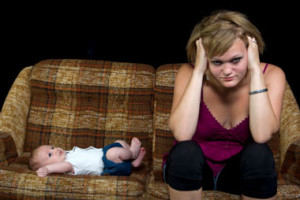 Let’s first be clear – we know post-partum depression is a worldwide phenomenon, it exists in developing nations, sometimes at higher rates than in Western ones
Let’s first be clear – we know post-partum depression is a worldwide phenomenon, it exists in developing nations, sometimes at higher rates than in Western ones

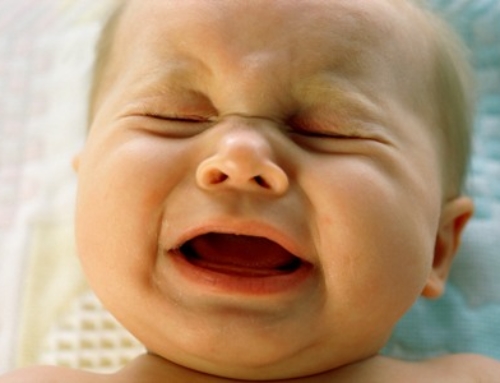

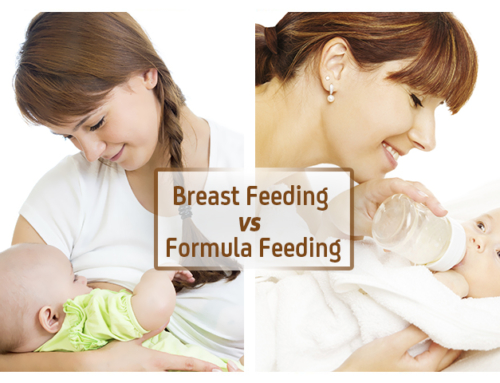
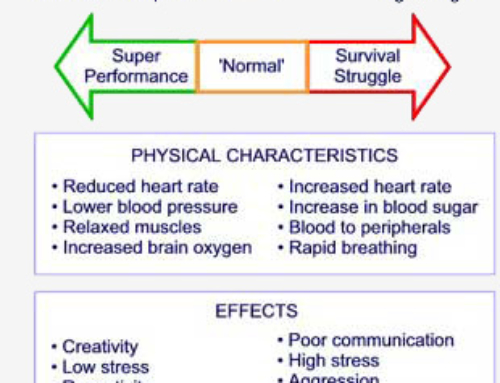
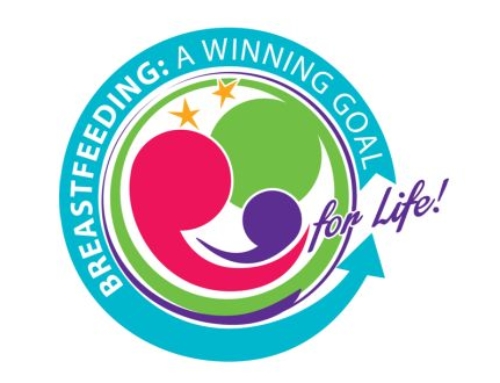
Great article. I had no problems breastfeeding and a lovely birth but due to my in-laws causing immense drama the first 6 weeks of my son’s life were terribly stressful. I believe this resulted in my subsequent struggles that have greatly tarnished my memories of my son’s first 6 months. Next time around I will be following Mayim Bialik’s plan.
Family can cause drama, can’t they? I’m not sure if it’s any different than in the past though 😉 No – truly I think it is. I think the reverence around a mother and her newborn kept people in line in how they behaved around the dyad. We have so lost all our respect for the immensity of birth and the postpartum period, and I believe we are all suffering as a result.
I think that the unrealistic expectations that I had for my baby led me to feel a lot of anxiety, stress and sadness in his first few weeks. I had expected to be able to physically separate myself from him more, giving me more “me” time. I had planned to use a cot, a pram, an infant seat, a playmat, etc. But he cried whenever he was apart from me. Older female relatives, themselves mothers, told me that my son just needed to get used to these things, that there was no reason I couldn’t leave him sometimes, that it was healthier for him to sleep in a cot, and that babies loved prams. I felt so inadequate as a mother. Thankfully I gave in to my son’s determination to be closer to me, breastfeeding him whenever he needed and sleeping with him on my chest or next to me. However, it wasn’t until I saw sites like EP and others that I stopped resenting my son and started to finally consider myself a good mother, and my baby a perfectly normal (not ‘difficult’) baby.
I also felt that the drugs used during my labor made me feel emotionally flat for at least 48 hours after the birth.
Great article!
I agree with everything here and love this article. The one thing I feel like you missed is that we have evolved away from close knit communities so mothers have far less support. In small tribes many women all help care for one another’s babies and just like women do better with the support of other women in labor I firmly believe that benefit carries over post-partum. I am pregnant now and thinking of what it will be like for me as a comparison. We are moving into a new house a couple months before baby is due. Hopefully I will meet some ladies in the neighborhood, but all of my close women friends live a minimum half hour away and have to work. My mom and mother in law both live about an hour away. I’m could join a Meetup group or something too, but my point is the huge difference in support readily available. From an evolutionary perspective women have developed in very close knit social communities and this whole living across town thing is pretty new 😉
Natalie,
The whole point of the site is that 🙂 But I had hoped that it would become clear in the support section. I was just trying not to make this as long as it could have been! But yes, of course the evolution away from small community sucks and has a profound impact on all of these factors 🙂
Tracy
[…] https://gku.flm.mybluehost.me/evolutionaryparenting.com/is-post-partum-depression-a-modern-day-problem/ […]
[…] https://gku.flm.mybluehost.me/evolutionaryparenting.com/is-post-partum-depression-a-modern-day-problem/ […]
definitely not a modern phenomenon. We just have diagnostic tools and a society that recognises what PPD is. Read the Art of Peaceful Parenting, among other resources. Women have been carrying out infanticide and all kinds of abuse towards their babies throughout all human societies. Natural parenting resources seem to revere past parenting practices when in fact babies and children have born centuries of sexual, mental, physical and emotional abuse at the hands of their parents, due to a range of reasons including PPD.
Note that I NEVER said it was ALL due to modern society, but our rates ARE higher than that of other cultures who have more community in raising children. Of course it’s going to happen regardless for, unfortunately, the most severe cases, but we seem to be pushing people in our society towards it at alarming rates through a total lack of support for family.